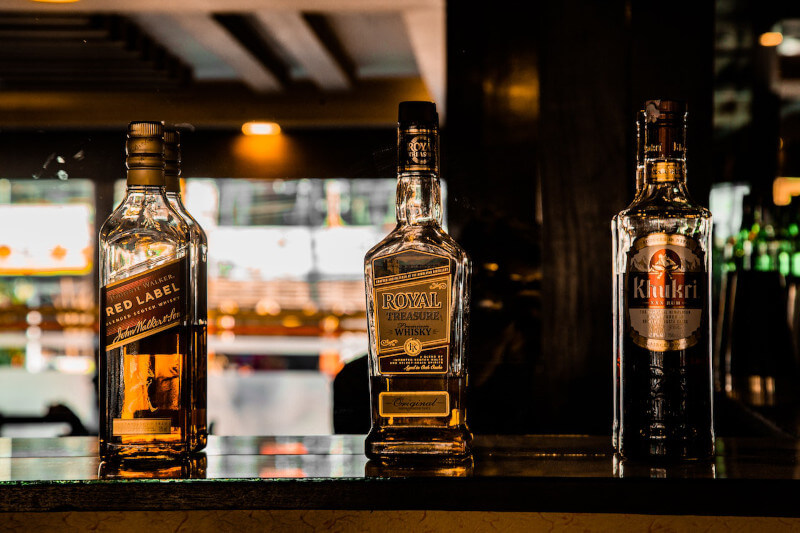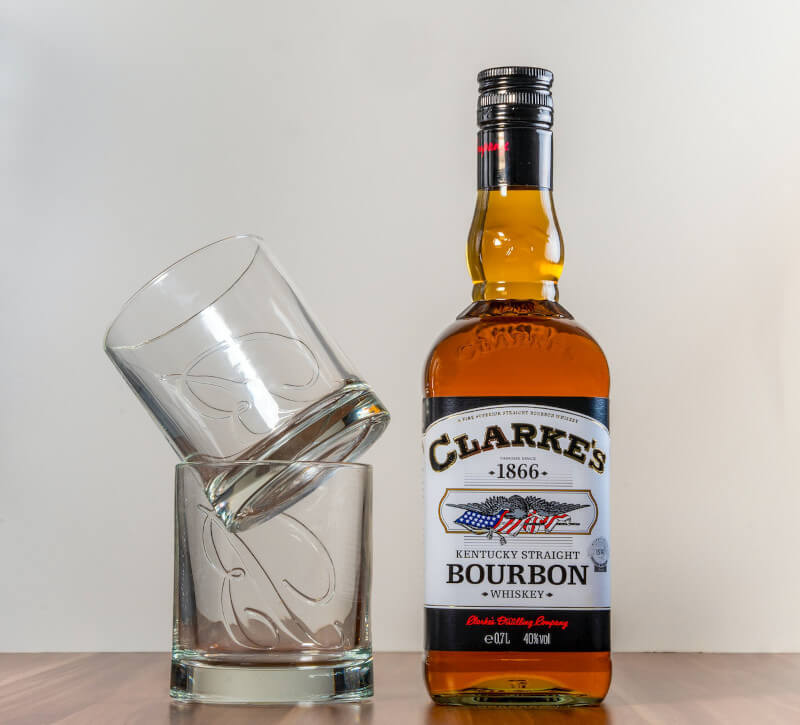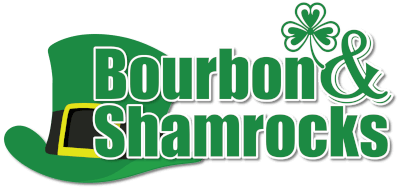An Indication: All Whiskey is Bourbon, but Not All Bourbon is Whiskey
The distinction between bourbon and whiskey may not be clear to someone who doesn’t regularly consume either of these brown spirits. After all, whiskey and bourbon both appear to be brown liquids. To further cloud matters, you’re technically correct if you simply call bourbon whiskey. In the same way that Champagne is a kind of wine, bourbon is a type of whiskey. Therefore, all whiskey is bourbon, but not all bourbon is whiskey.
At Least 51% of Bourbon is Maize
Bourbon’s unique flavor comes from its long aging process, which sets it apart from other types of whiskey. Whiskey is the alcohol resulting from the fermentation and aging of grain. However, different types of grain and different types of casks produce distinctive whiskies. The American Bourbon Association defines bourbon as whiskey that is produced from a mash that contains at least 51% maize. Bourbon’s signature sweetness comes from the corn used to make it.
What About Whiskey?
Whiskey is an alcoholic beverage that is produced by distilling a grain mixture (often barley, corn, rye, or wheat) that has been fermented. Scotland, Ireland, Japan, Canada, and the United States are just a few of the countries that distill whiskey. It’s possible to find a whiskey that hasn’t been aged (moonshine), but the vast majority of whiskey is aged in oak barrels, which gives it a deeper color, adds oak and wood flavors, and softens the alcohol’s bite.

Single malt whiskies and rye whiskies are only two examples of the various varieties of whiskey available. At least 51% rye (the grain used to make rye bread) is required in the mash for the whiskey to be classified as rye. Single malt whiskies, which can be found in the Japanese, Irish, Scotch, and American whiskey categories, are distilled only once, using malted barley as a primary ingredient. The Old Fashioned (often made with bourbon but sometimes with rye whiskey), the Sazerac (seen above), and the Rob Roy are all examples of classic whiskey cocktails.
New Charred Oak Barrels Are Used for Ageing Bourbon Every Time
In addition, bourbon must be matured in freshly charred oak barrels and can’t have any flavorings or colorings added to it. Non-bourbon whiskies, such as port, sherry, and rum casks, are commonly employed in the aging process. Traditionally, bourbon whiskies have been aged in whiskey barrels. To be labeled “straight bourbon whiskey,” bourbon must have been matured for at least two years in freshly charred oak barrels.
Certain Alcohol by Volume Thresholds Must Be Met Before a Bourbon May Be Considered Legal
Proof, or alcohol content, is measured when bourbon is placed in barrels. Mash can’t have more than 80% alcohol by volume, thus it must be distilled at 160 proof or below and matured in barrels to no more than 125 proof (62.5% alcohol by volume). Bourbon is diluted to a minimum of 80 proof (40 percent alcohol by volume) before bottling. Some whiskies are distilled and aged to a higher or lower percentage of alcohol than others. For example, there is no maximum or minimum ABV for Scotch whiskey, yet the minimum bottling strength is 80 proof or 40% ABV.
How Would You Describe the Flavour of Bourbon?
In case you were wondering, bourbon does have a unique flavor that makes it worth mentioning when ordering a whiskey. Bourbon is distinct from other whiskies in that it has a sweeter taste due to the high proportion of corn in the mash bill. Bourbon’s distinctive vanilla flavor comes from the new wood barrels in which it is aged. When oak is charred, the compounds it contains become caramelized, giving off aromas and flavors reminiscent of toffee, honey, and brown sugar. These characteristics are what make bourbon cocktails so tasty when combined with other flavors, such as maple syrup or apple cider.
While Most Bourbon Does Come From Kentucky, It is Not Required
You may have heard that whiskey can only be called bourbon if it is distilled in the state of Kentucky. However, bourbon is not exclusive to Kentucky and can be produced elsewhere. But to be called a “Kentucky bourbon,” the alcohol must be both distilled and matured in the Bluegrass State. Old Bourbon, in what is now Bourbon County, Kentucky, is where the word “bourbon” originated. Although not all sparkling wine is manufactured in the Champagne area of France, the name has been synonymous with the region because of its association with champagne. When you order a bourbon the next time, you’ll know that you’re getting a very particular (and tasty) kind of whiskey.
Whiskey or Bourbon: How Do I Choose?
Tasting notes should be included with any high-quality whiskey, bourbon, or otherwise. You can find this information on the bottle or the distillery’s website. You can use these tasting notes to determine if the flavors interest you. If, for instance, cinnamon and butterscotch are two flavors you particularly appreciate, you can look for a whiskey that features those flavors. Most whiskey drinkers want to sample as many varieties as possible. The best whiskies can only be identified by extensive tasting.
What Characteristics Define a Bourbon Whiskey?

Whiskey and bourbon are often viewed as two entirely separate beverages. “When they hear we have a whiskey room, their first question is, ‘Do you have bourbon too?'” ‘Or just whiskey?’ or ‘I don’t like whiskey, but I enjoy bourbon,” Gustafson says. Many people don’t understand what they are. Every one of them is a whiskey. A legal definition of what comprises bourbon has been established to ensure uniformity throughout the business.
Location
The aging and distillation of bourbon must take place in the United States. Despite its strong ties to Kentucky and the South, it can be produced anywhere in the United States.
The Grain MakeUp
Bourbon is a grain whiskey made from a grain mash bill. At least 51% maize must be used in the distillation process for it to be permitted. The rest can be wheat, rye, barley, or any other cereal grain. The mash bill is the list of grains that will be fermented together.
The Aging Process
During the aging process, Bourbon is stored in brand-new charred American white oak barrels. The bourbon’s color and additional flavor come from its time spent aging in a wooden barrel. The time it takes to age might range from a few months to several decades. The whiskey’s age in the barrel is typically noted on the bottle. The age assertion describes this phenomenon.
Proof
80 proof (or 40% alcohol by volume) is the minimum standard for bourbon in bottles. Standards for the required proof of the bourbon are in place not just at the end of the distillation process. Bourbon can’t legally be aged in barrels until it reaches 125 proof (62.5% ABV), and it must be distilled to no more than 160 proof (80% ABV).
Subtle Taste Differences
There are subtle variances in flavor, with Bourbon often having a sweeter character than other whiskies. Bourbon’s distinctive flavor is sometimes described as a combination of toffee, vanilla, and butterscotch. The fermented maize and other grains that make up the mash bill give bourbon its signature sweetness.
Straight Bourbon
Stricter guidelines and criteria are adhered to in the production of straight bourbon. Two years of aging is the bare minimum for pure bourbon. An age statement must be included on the bottle if the contents have been aged for less than four years. Additives like caramel coloring are prohibited in straight whiskies as well.
